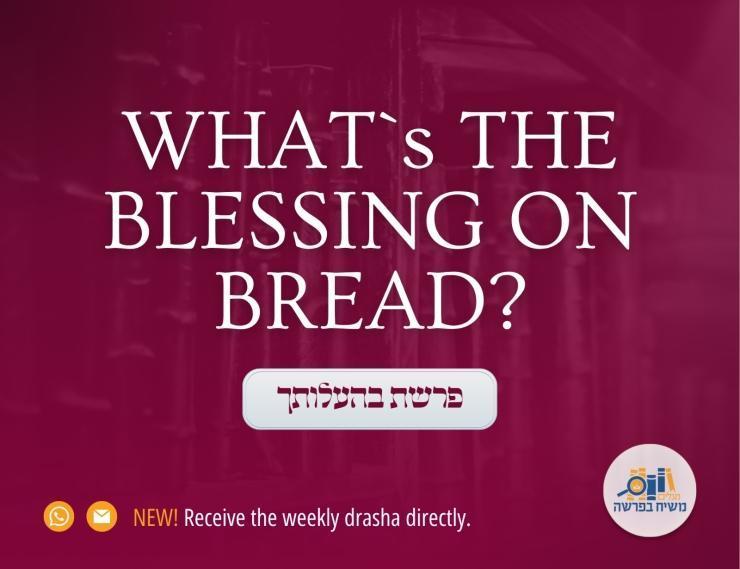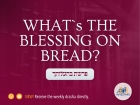Redemption For One, Redemption For All
From the desk of Rabbi Nissim Lagziel: This Shabbos we read parshas Chukas and will be marking the Yemei HaGeula of Yud-Bes-Yud-Gimmel Tammuz, the Rebbe Rayatz’s Chag HaGeula. What connection is there between parshas Chukas and Yud-Bes-Yud-Gimmel Tammuz? What can we learn from this regarding the true and complete Geula? • Full Article
By Rabbi Nissim Lagziel
BEGIN WITH A GRIN
A bachur who became involved with Chabad returned home on 12 Tammuz and his mother asked him, “Where were you?”
He said, “At a Chassidic farbrengen to mark the previous Rebbe’s release from prison.”
Several months later he returned home late on 10 Kislev and his mother asked him, “Where were you?”
He said, “At a Chassidishe farbrengen to mark the second Admor’s release from prison.”
A week later, Yud-Tes Kislev, “I’m coming from a Chassidic farbrengen to mark the release from prison of the first Rebbe, the Baal HaTanya.”
His mother, taken aback said, “What sort of group have you joined where all the rabbis sat in jail?”
ALL FOR ONE…
This Shabbos we read parshas Chukas and will be marking the Yemei HaGeula of Yud-Bes-Yud-Gimmel Tammuz, the Rebbe Rayatz’s Chag HaGeula. The way the calendar works out is by divine providence and provides lessons for us. What connection is there between parshas Chukas and Yud-Bes-Yud-Gimmel Tammuz? What can we learn from this regarding the true and complete Geula?
The Rebbe Rayatz famously wrote, “Gd did not redeem me alone on the twelfth of Tammuz, but also all who cherish our sacred Torah, who observe its mitzvos, and all those who are but a Jew in name, because every Jew… his heart is sincere with Hashem and His Torah.”
The question is, really? Does that assimilated Jew in Australia or the United States really care that the Lubavitcher Rebbe was freed from prison in Russia? How does the release of the Rebbe Rayatz affect the life of someone on the other end of the world? And how was he redeemed with the previous Rebbe’s redemption?
We can ask the same question about the true and complete Geula. Will the Geula only be for those who look forward to it, those who keep the Torah and look forward to seeing the Beis HaMikdash or at least those who feel the sorrow of the exile and cry over the churban? Or will it be a Geula for every Jew, even someone who doesn’t know what Geula is and why we need it?
The answer to this question lies in the name of the parsha, Chukas. Chassidus explains that the name “Chukas” is related to the word “chakika” (engraving). The difference between letters that are written and letters that are engraved is that when you write something on a paper or parchment, the letters are separate from the parchment. When you engrave letters in stone, the letters are part of the stone. This difference symbolizes the eternal connection between the G-dly soul and G-d.
The essence of a Jew is his G-dly soul, and his G-dly soul is one with G-d. It is engraved under the Throne of Glory so that it is inseparable from the Creator. This is an eternal bond and nothing can change it. Every Jew has this ‘pintele Yid’ within him; a constant bond with Hashem which he neither wants to nor can he disconnect from. This bond is called “etzem ha’nefesh” – the burning soul of a Jew. The problem is that this pintele Yid, this G-dly point, is… in exile! It is in an internal prison, a prison enforced upon it by its descent into a body and being enclothed by the animal soul and evil inclination.
If we want the pintele Yid to have an effect and be revealed in all its glory, so that it deeply impacts a person so he lives a life of Torah and mitzvos and connects with G-d in every detail and moment of his life, we need to free the neshama from its bonds. We must remove the G-dly soul from its imprisonment, We need to redeem the G-dly point from its foreign opposition.
But how? How do we redeem a Jew who doesn’t know he is in exile? How do we free a prisoner who doesn’t know he is imprisoned? The answer is alluded to in our parsha!
AND ONE FOR ALL
Toward the end of the parsha, the Torah teaches us an important lesson about the bond between a Jew and the Nasi HaDor. On the one hand, the verse says that Moshe sent messengers to the king of Edom to ask him permission for the Jewish people to cross through his land. On the other hand, when the Torah describes the messengers sent to the king of Emori, it says that the Jewish people sent them, not Moshe. The story doesn’t end there. In Devarim, it says just the opposite. There it says that Moshe says about himself that he is the one who sent messengers to Sichon the king of Emori, and in the book of Shoftim, Yiftach says that the Jewish people are the ones who sent messengers to the king of Edom, and not Moshe.
What’s going on here? Who sent who, when, where and why?
Rashi, in our parsha solves the mystery. “Moshe is Yisrael and Yisrael are Moshe, to tell you that the Nasi of the generation is like the entire generation, because the Nasi is everything.” There is something internal which creates a bond between the Jewish people and the Nasi HaDor, the Moshe Rabeinu of the generation, which is why the entire nation is comparable to Moshe, and Moshe is comparable to them all; because the Nasi is everything. Whatever we have, we get from the Nasi Ha’Dor.
When the Rebbe Rayatz was released, something deep and essential was revealed within every Jew; the pintele Yid within him was redeemed. When a person is redeemed, he reveals what he truly is; he doesn’t need to turn into someone else. The chains that confine us and don’t allow us to express our true selves just need to come off. Our true existence needs to be revealed; that existence that was always in exile but was bound, hidden. That very existence is what was revealed and freed with the Geula. As the Rebbe said in a 12 Tammuz sicha, “The Geula redeemed and revealed the true existence of every Jew, the essence of his soul, and from that aspect “his heart is sincere with Hashem and His Torah.”
As for us, and in connection with the true and complete Geula, only one thing is asked of us: to express the essence of our neshama in everyday life, to use it, to bring it into actual revelation in all our soul powers, in the chochma and bina of our brains; the love and fear of the heart; and in the “levushim” – thought, speech and action.
TO CONCLUDE WITH A STORY
We will end with a story which demonstrates how every Jew will be redeemed in the Geula shleima. In a Jewish town there lived a wicked apostate who informed on his fellow Jews to the government. The Torah scholars decided that according to Torah law, this man was deserving of death. They prayed for the death of the informer but their prayers were not accepted. They sensed that the tzaddik, R’ Zev Wolf of Zhbarizh (the son of R’ Michel of Zlotchov) was protecting the informer with his prayers, so they went to Zhbarizh to discuss this with R’ Zev.
They said that they saw with ruach ha’kodesh that no tzaddikim would descend from this wicked man and therefore there was no reason not to pray for his demise. R’ Zev listened and then said, “Dovid HaMelech says in Tehillim that in the Geula, the kings of the nations, ‘will bring a gift to he who is to be feared.’ They will want to give a gift to Moshiach and will want to appease him for all the terrible things they caused the Jewish people in exile, so he won’t take revenge.
The kings of the world will meet to discuss how to be saved from Moshiach’s wrath. The wise ones of the nations will express their opinions and then at some point, the wisest of them will get up and say, “You should know that what you’ve said is nonsense. Moshiach doesn’t need your gifts! This is what I advise. Send him what he considers the most precious thing of all. Let’s send him a Jew as a gift!”
The kings of the nations will agree and start looking for whom they can give as a gift to Moshiach. The problem is that at that time there won’t be a single Jew to be found in the lands of the nations for they will have all done teshuva and the cloud will have carried them to Eretz Yisrael. After much searching they will find a wicked Jew whose heart is like stone. They will find this informer that you want to curse and send him, with great honor, to Moshiach. Then, Moshiach will get up and say, “A Jew? This is the greatest gift for me, because even the worst Jew is more precious than anything.
The tzaddik concluded his story and said, “And this great gift you want to curse?”
Good Shabbos!
36
Join ChabadInfo's News Roundup and alerts for the HOTTEST Chabad news and updates!








































